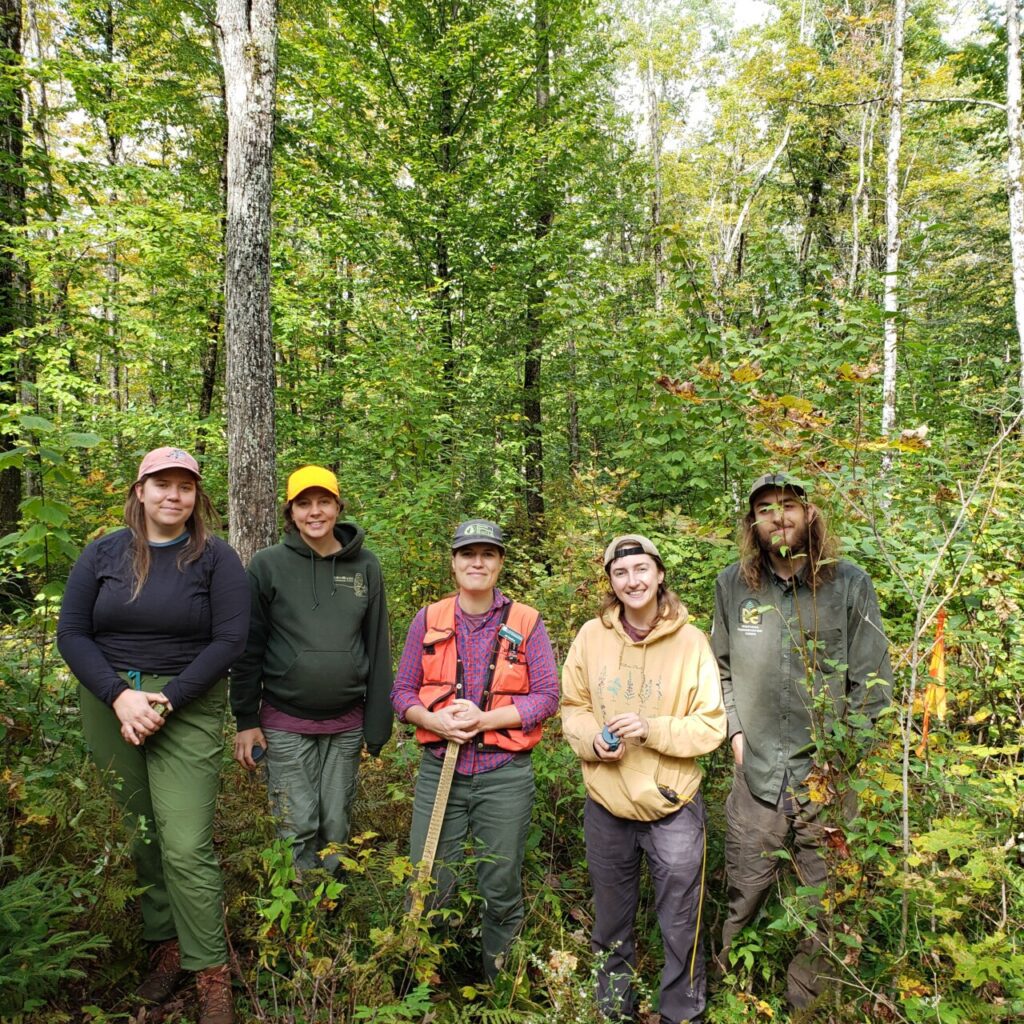 In 2023, with the support of the Society of American Foresters (SAF) Kurt Gottschalk Science Fund, the NorthWoods Stewardship Center partnered with UVM Extension Forester Ali Kosiba to establish climate resilience monitoring plots in the NorthWoods demonstration forest. Using protocols developed by UVM Extension, NorthWoods forestry staff and interns collected data that will be used to evaluate a forest stand where past timber harvesting was designed to improve climate resilience, bird habitat, and other ecological values.
In 2023, with the support of the Society of American Foresters (SAF) Kurt Gottschalk Science Fund, the NorthWoods Stewardship Center partnered with UVM Extension Forester Ali Kosiba to establish climate resilience monitoring plots in the NorthWoods demonstration forest. Using protocols developed by UVM Extension, NorthWoods forestry staff and interns collected data that will be used to evaluate a forest stand where past timber harvesting was designed to improve climate resilience, bird habitat, and other ecological values.
Sustainable Forestry Interns at NorthWoods spent their 10-week season working on a wide variety of projects related to forest health, forestry, and conservation. The internship aims to balance gaining knowledge and understanding while completing boots-on-the-ground projects. This monitoring project introduced them to the important topic of climate resiliency and the ways active management can make a forest more resilient to the types of climatic changes we are preparing for in the northeast. In addition to the specific monitoring procedure for these plots, they also learned about the many ways that climate change is impacting forestry throughout Vermont and beyond.

Forester Ali Kosiba (center) with NorthWoods FSI staff and interns during the climate monitoring project.
As the pressures of climate change increase, bringing more extreme weather events, pressure from invasive plants and insects, warmer temperatures, and other unknowns, it is more apparent than ever that forest management best practices will incorporate the goal of creating resilience to all or some of these factors. Resilience, the ability to withstand or recover quickly from a disturbance is important in keeping forests ecologically healthy as well as maintaining timber value in working forests. Variables that affect resiliency include the movement of water through forests, regeneration of trees and woody species, complexity of the forest, presence of dead and downed wood, and presence of future adapted species (12 Steps for Climate Resilience). While widely used forestry practices aim to promote many of these factors, monitoring forests over time and measuring variables that correlate to resilience will allow foresters, landowners, and scientists to fine-tune their management practices across the state.
As part of a larger project being coordinated by UVM Extension Forestry monitoring plots are being established in treatment areas around the state with the aim of measuring the response to specific management practices. In September 2023, NorthWoods Sustainable Forestry Interns and Forestry Outreach Coordinator Devan Pensinger established 8 paired plots in the Spitzer Demonstration Forest at NorthWoods.

Monitoring in progress!
The plots were located in an area with past timber harvesting, using treatments of variable density thinning and group selection that had occurred in 2013 as part of the Silviculture for the Birds initiative led by Audubon Vermont and the Vermont Department of Forests Parks and Recreation. Both of these practices align with increasing complexity, promoting regeneration, and providing valuable habitat for forest birds. In some areas, trees were girdled to create standing dead snags, while other non-merchantable wood was left on the ground. Control plots were paired with treatment plots in similar conditions in the stand. Variables measured include information on the number and size of trees, saplings, and seedlings, understory vegetation, presence of invasive species, and forest health. Measurements taken by the interns will be used to understand the outcomes of these practices now and in the future. These permanent plots will be revisited at intervals in the future and hopefully be an informative resource for others who are deciding to implement similar harvesting practices in their forests.

